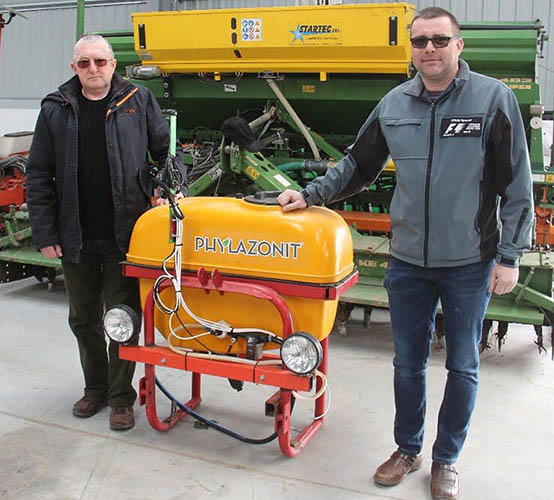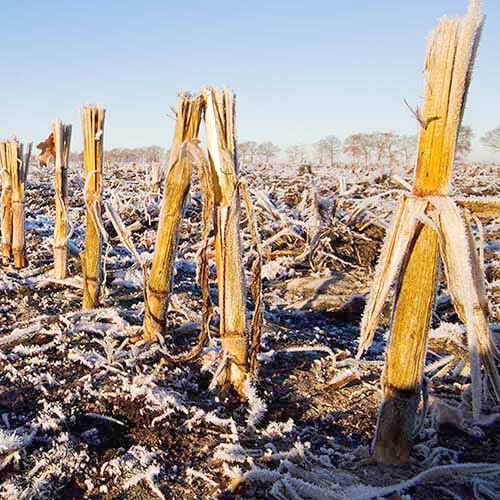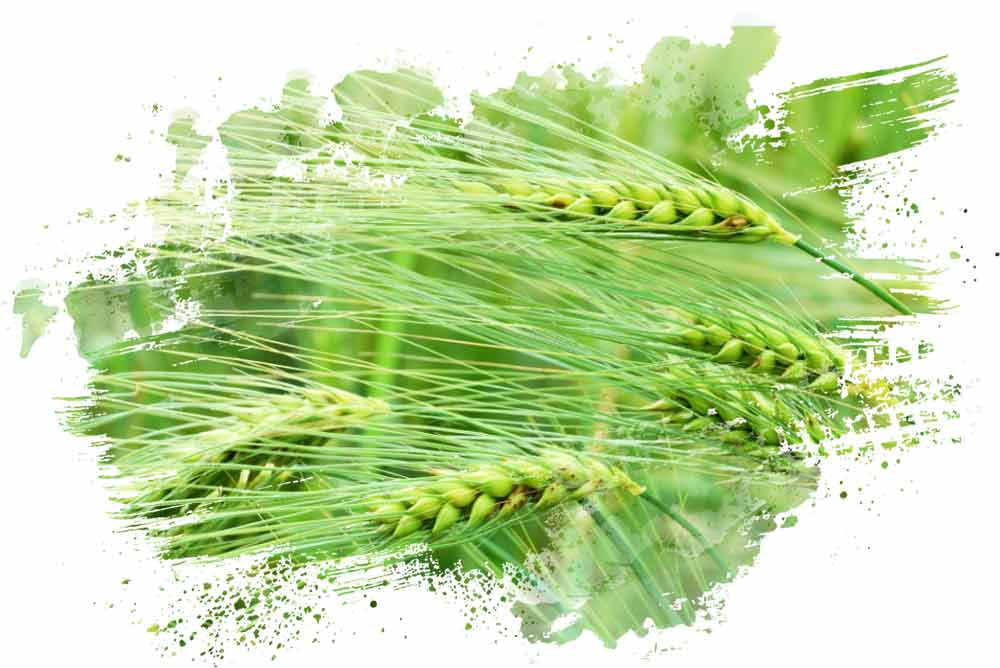Phylazonit Technology worked out well on Nagylók
I began cultivating in 1994. Presently we possess a land of 450 hectares and and we have around 300 hectares of wage work. My child graduated in 2006 as Agricultural Mechanical Engineer in Mezőtúr. After graduation, he joined the farm and, because of him, we re-examined and re-evaluated our innovation around then – said Ferenc Prescher, at that point gave the words over to the younger generation, his child – Peter Prescher, with whom I discussed the Phylazonit Technology introduced by him.
How long have you been in contact with Phylazonit? Also, for what reason did you choose to utilize bacterial fertilizers?
“It just so happens… we saw it in our environment that for progression to occur one must change; for instance, we wanted to have less operations to decrease cost and as our essential objective, we needed better water preservation. We essentially lean toward conventional tillage, we have tillage drills. However, we changed to completing all furrowing at one single step for water management purposes. In spring we don’t do any harrowing works, in autumn we finish it with discs and in spring we sow right away.”

“If I might add: we had to be financially more grounded before any innovation! I bought the fields from the agricultural cooperatives and these terrains were truly neglected and ailing in nutrients. It took years to get our land in shape.” – said the father with emphasis.
“Yes, my dad is right! About 12 years ago, when I graduated, we were in a financial situation that we could see ourselves be able to innovate. That’s when our replacement of our fleet was really starting to kick in along with other developments, and as we were able to reduce our number of operations, we had more and more time for wage work. Now we’re getting to the point where we’re way too mechanized…”
.

.
How long have you had soil bacteria in your technology?
“We started experimenting with bacterial fertilizers about 10 years ago. To be honest, we were approached by lot of distributors, we tested everyone’s product but somehow it always turned out unsuccessful. Either we had a very droughty year or we didn’t have the technology for it and that’s an essential part! Proper application is vital for the bacteria work well. But you can’t make an omelet without breaking some eggs…
Then we took advantage of the Phylazonit discount and turned the 50 HUF per liter cost allowance back into applicator equipments. That was when we installed an applicator on our corn seeder which sprayed the bacterial fertilizer directly into the seed bed and covered it so it got no direct sunlight, as UV radiation has a detrimental effect on bacterial fertilizers. This year, this applicator is ready for our wheat seeder too and it will also feed the bacterial fertilizer into the seedbed in 32 rows, thus eliminating the above mentioned harmful effects.”
As far as I know, Phylazonite soil bacterial experiments have also been performed. Could you talk about it?
“Yes, three years ago we set up an experiment on a field of 2 and half hectares. We splitted the the field into two, the first half was traditionally cultivated without bacteria, the other half by using Phylazonit Soil Inoculant and Stubble Decomposer. Two years ago we had an outstanding 30% yield surplus of maize although I would point out that in that year there was a favorable precipitation which is one of the most important parts of bacterial utilization.
Four years ago, we experimented with spring barley, we divided a 20-hectare field and then we used Soil Inoculant first time, prior this we had only used Stubble Decomposer. We grow spring malting barley where it is important not to exceed a certain parameter of the protein. We were a little afraid at the start … But the parameters and the content values were good too. We harvested the two fields separately, getting a surplus of 600 kg/ha for the treated field which, talking about numbers, resulted in a profit nearly three times higher compared to the cost of the bacterial fertilizer. So we have been using Phylazonit Soil Inoculant for malting barley ever since. It works for us.”
What was your experience with maize?
“We also use Phylazonit products in one pass with maize seeding, and the Stubble Decomposer after harvest. We have been experimenting with the applied amount of Phylazonit Stubble Decomposer for years now which actually depends on the year, the higher the stalk volume the more water it requires. It has beed two years that we do spraying at 45-50 liters per hectare for stubble cultivation, the product itself goes out in a dose of 10 liters with 35-40 liters of water. In my experience, it is important to have as much water as possible so that bacteria can multiply.”
 “Until we started to use the Phylazonit Stubble Decomposer, there was a great amount of stalks residues and cuds were almost intact. Usually we sow spring barley after maize, and now we have significantly less stalk residues and with not that strong stalk and it falls apart like dust.” – says the father.
“Until we started to use the Phylazonit Stubble Decomposer, there was a great amount of stalks residues and cuds were almost intact. Usually we sow spring barley after maize, and now we have significantly less stalk residues and with not that strong stalk and it falls apart like dust.” – says the father.
“I would like to emphasize that our production costs did not increase after utilizing bacterial fertilizer as we replaced about 100kg/ha fertilizer with it.
All in all, since the use of Phylazonit Soil Inoculant and Stubble Decomposer the soil structure has improved dramatically, the fertilizer absorption has improved and the soil nutrient uptake has increased which naturally results in better crop yields. Two years ago, we harvested 4 tons of maize and it is our higest ever yield in 24 years.”
What is your experience with sowing in autumn?
“For that we use the Phylazonit Stubble Decomposer, so far we have not been able to apply the Soil Inoculant. We have a new experiment this year: after maize we sowed spring barley in autumn. We were afraid of it but there is a company we grow it for and they suggested to try it. We sowed a hundred hectares and I can safely say it worked out well. April is here, and as the proverb says: April barley is good in sacks. The weather is never optimal for sowing. Fortunately, the snow covered it protecting from frost. We have just checked it and it looks good, the barley sprouted nicely. After maize, the stubble was broken down and then we sowed. From now on, the inoculant goes directly into the seed bed as we have finally got Applicator installed on the seed drill.”
You have just acquired the TEMPOSENSOR device. How will this help?
“For example, to apply Phylazonite soil bacterial formulations evenly throughout the field. The TEMPOSENSOR senses the speed of the tractor and the raised position of the machinery at headlands and it adjusts the dosing of the product in a tailored way and it even indicates how much of the compounds have been used and how much is left in the tank. This saves time for the driver and, on the other hand, immediately identifies any technical problems that may arise during application which is an important element of efficiency.”
Overall, what do you recommend for farmers who think about testing soil bacteria?
“In my opinion, anyone who gives it go must be persistent. When you start on a bad soil and try to improve, you may not expect a miracle after a year. For us, it was a couple of years before we felt the quality change of our fields. We loosen up our fields in every two years, we use conventional tillage but thanks to the Phylazonite bacteria, the soil resistance is much lower and our soil structure is much better. If we had considered the first few years as failure, then we would have not got where we are now. I recommend it for every farmer to create a control field, halve it and then can they really see what these bacteria can bring to their land.”
Nárcisz Kalmár


